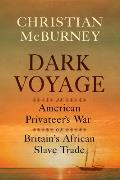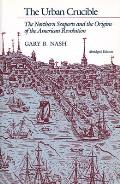John Pope “removed from his late habitation”
There was a class of itinerant healers in early America, particularly dentists like John Baker. But Pope had lived in Boston before the war. Not only did he have a family and a Quaker faith community in Boston, but his reputation was strong enough that he didn’t have to go looking for patients; hopeful people came to him.
The siege of Boston disrupted that, sending Pope out to Mendon in the middle of 1775, as mentioned yesterday.
After the British military evacuated Boston in March 1776, Dr. Pope might have returned there, but he didn’t stay. Instead, on 6 July he ran this ad in the Providence Gazette:
The Public are hereby informed, that JOHN POPE who of late Years hath been much noted in curing malignant ULCERS, and inveterate CANCERS, having by Reason of the distressed Situation of the Town of Boston, his native Home, removed into the Country, now resides at Smithfield, near Woonsoket Falls, Rhode-Island Government.On 22 July Dr. Pope made the same announcement in the Boston Gazette, adding “scrofulous Tumours” to the list of things he was known to cure. Those were swelling in the neck produced by an infection of the lymph nodes, often involving tuberculosis. Since Americans no longer had access to the king’s touch, they need a domestic scrofula cure.
Two years later, on 7 May 1778, Pope told readers of the Independent Chronicle that he had “removed from his late habitation, into Lincoln, at Humphry Farrar’s and expects soon to fix himself in the south of Concord.” Farrar (1741–1816) had mustered in his militia company during the Lexington Alarm and the push onto the Dorchester peninsula. He later moved to Hanover, New Hampshire.
Five more years, and on 22 May 1783 Dr. Pope returned to the Independent Chronicle to announce his new home as “Lynn, Essex County, Massachusetts State, near the Friends Meeting-House.” This ad then added:
He has for sale, at a small Price for the Cash, in the South corner of Concord, about two acres of excellent Land; with some fruit Trees, a well of Water, a small upright House and two other small Buildings; situate very suitable for a Blacksmith, or a good Shoe-Maker.Folks interested in the property could inquire of a neighbor, Amos Hosmer (1734–1810). Having experience from the previous war, Hosmer had been made a sergeant and then lieutenant in the Middlesex County militia.
Pope’s stay in Lynn wasn’t long, either. On 17 Sept 1785 the Massachusetts Centinel told readers:
John Pope,Dr. Pope had finally returned to “his native Home,” and he stayed there until his death in 1796.
Who for 18 years past has been noted for curing Cancers, scrophulous Tumors, fetid and phagedonic Ulcers, &c. has removed into a house, the North corner of Orange and Hollis Street, south end, Boston, Where he proposes to open a school for Reading, Writing, Arithmetick, Surveying, Navigation, Mensuration of superfices and solids, practical Gauging, &c, and an Evening School the 19th inst. [i.e., of this month]
[The picture above shows a section on “Mensuration of Superficies” from Nicolas Pike’s A New and Complete System of Arithmetic, Composed for the Use of the Citizens of the United States, published out of Newburyport in 1788.]
















